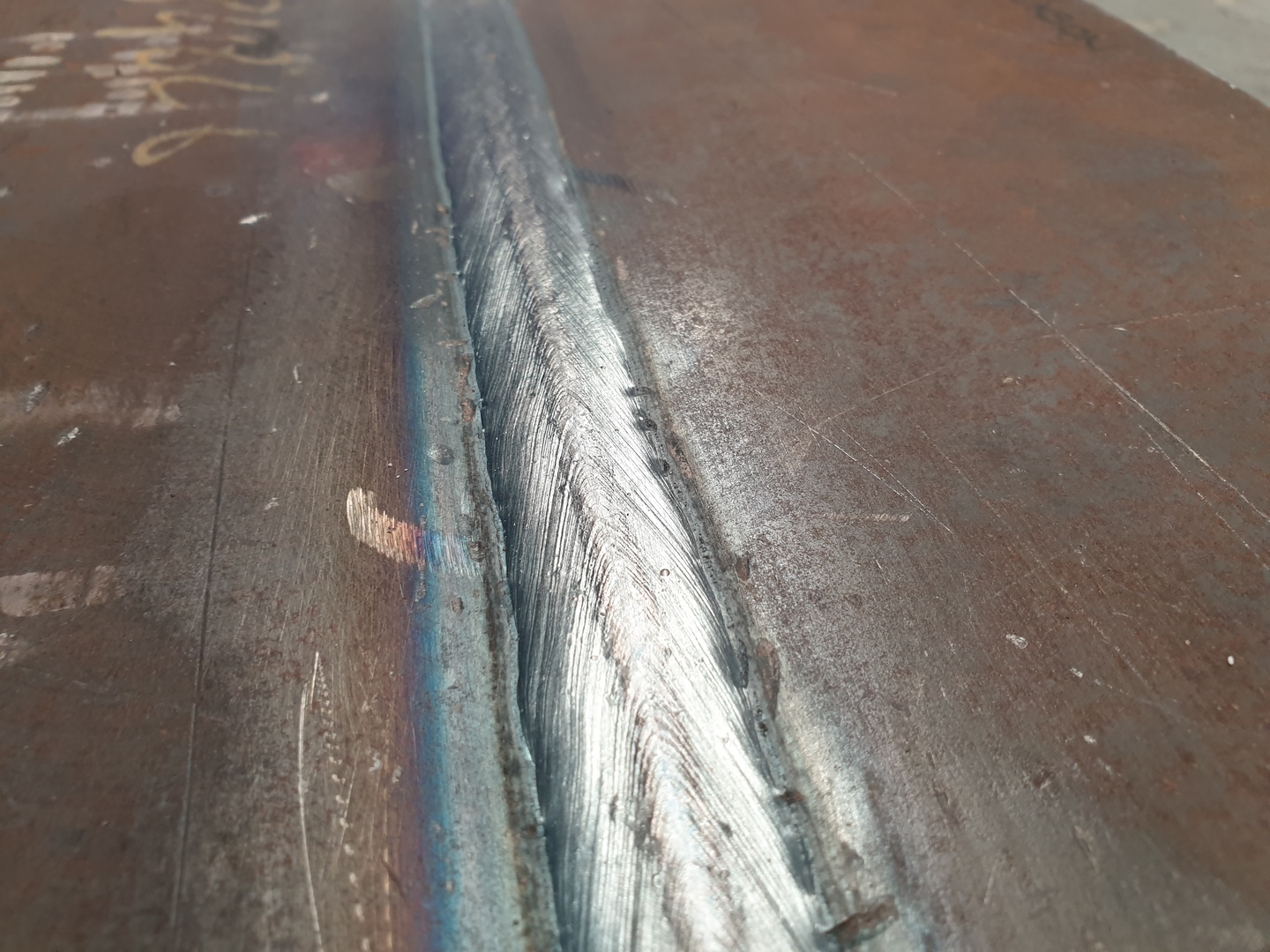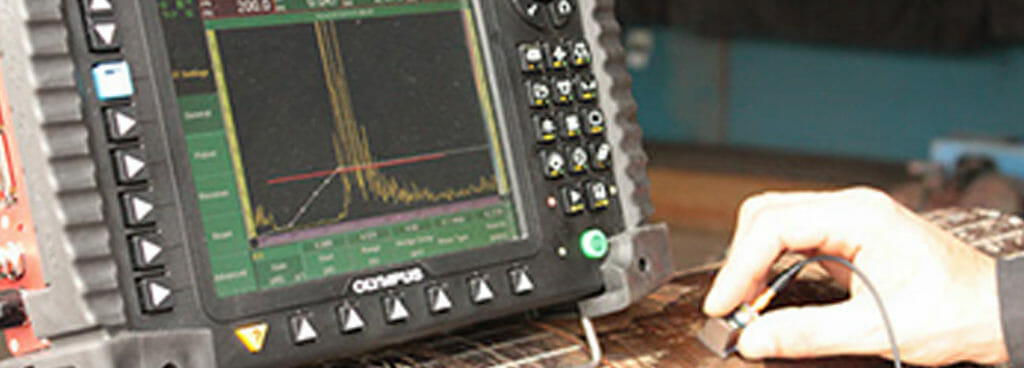The Ultimate Overview to Welding Inspection Racine for Industrial Requirements
The Ultimate Overview to Welding Inspection Racine for Industrial Requirements
Blog Article
Ingenious Strategies to Fillet Weld Evaluation and Testing: Enhancing Weld Quality and Compliance Specifications
In the world of welding, the quality and honesty of fillet welds play an essential function in ensuring the architectural sturdiness and integrity of various commercial components. With the consistent drive for boosted performance and conformity with strict requirements, the exploration of cutting-edge approaches to fillet weld examination and screening has become critical.
Advanced Non-Destructive Screening Methods
Making use of cutting edge innovations, progressed non-destructive screening techniques play a crucial role in making certain the stability and quality of fillet welds. These approaches, such as phased array ultrasonic testing (PAUT) and magnetic bit testing (MPT), offer detailed insights into the weld's internal framework without causing any kind of damages to the product. PAUT, for instance, uses numerous ultrasonic aspects to examine the weld from various angles, providing a detailed visualization of potential issues like lack of combination or splits.
By employing these advanced non-destructive screening methods, weld assessors can precisely analyze the quality of fillet welds, making sure conformity with sector requirements and policies. The capacity to spot defects early on not just improves weld high quality yet additionally prevents expensive rework or failures in architectural stability, underlining the importance of these innovative testing methods in welding evaluations.
Robotics and Automation in Evaluation
The integration of robotics and automation has changed the evaluation process for fillet welds, boosting effectiveness and precision in high quality evaluation. Robotics use exact control and repeatability in inspecting welds, making certain reputable and consistent outcomes. Automated systems can be configured to comply with certain assessment paths, making sure thorough protection of welds and reducing the threat of human mistake.
Robotic examination systems outfitted with sophisticated sensors can find and determine weld features with high precision, providing in-depth data for evaluation. These systems can identify problems such as fractures, lack of blend, and porosity, allowing punctual restorative actions to be taken. Additionally, robotics and automation enable for real-time data collection and evaluation, giving instant feedback to drivers and assisting in fast decision-making procedures.
Additionally, making use of robotics and automation in fillet weld inspection boosts overall productivity by reducing inspection times and raising evaluation throughput. By enhancing the inspection procedure, makers can ensure weld top quality and conformity requirements are fulfilled successfully, eventually leading to set you back financial savings and enhanced item high quality.
Utilizing Artificial Intelligence for Analysis
Fabricated knowledge plays a pivotal role in enhancing the performance and precision of analysis in fillet weld inspection processes. By utilizing the power of AI, assessors can streamline the evaluation of weld quality and conformity criteria, causing extra exact and reliable results. AI algorithms can rapidly refine substantial amounts of data from weld inspections, discovering issues or incongruities that may be challenging to identify with the nude eye. This innovative innovation allows real-time surveillance of weld high quality, permitting for immediate restorative actions Get More Information to be taken if any concerns are discovered.
Moreover, AI systems can pick up from more information past inspection information, continually boosting their capability to determine potential defects and inconsistencies in fillet welds. This adaptive learning capability improves the general quality assurance process, reducing the likelihood of human mistake and ensuring that welds satisfy the needed criteria. By incorporating expert system into fillet weld evaluation, industries can achieve higher degrees of efficiency, uniformity, and conformity in their assessment practices.
Portable Devices for On-Site Inspection
 Enhancing area assessment effectiveness, the fostering of portable devices revolutionizes on-site analysis procedures for fillet welds. These tools supply versatility and convenience, allowing inspectors to carry out comprehensive examinations in different places, consisting of difficult or remote environments. Portable tools such as ultrasonic screening gadgets, magnetic fragment inspection equipment, and digital radiography systems offer real-time information and high-resolution imaging capabilities, enabling fast decision-making and instant feedback on weld high quality.
Enhancing area assessment effectiveness, the fostering of portable devices revolutionizes on-site analysis procedures for fillet welds. These tools supply versatility and convenience, allowing inspectors to carry out comprehensive examinations in different places, consisting of difficult or remote environments. Portable tools such as ultrasonic screening gadgets, magnetic fragment inspection equipment, and digital radiography systems offer real-time information and high-resolution imaging capabilities, enabling fast decision-making and instant feedback on weld high quality.One significant advantage of mobile tools is their ability to simplify examination treatments, lowering downtime and improving overall performance. Examiners can quickly transfer these tools to various job websites, eliminating the demand for transferring heavy machinery or parts to off-site facilities. In addition, the transportability of these devices advertises cost-effectiveness by decreasing transportation expenditures and accelerating assessment timelines.
Moreover, making use of portable tools for on-site assessment advertises positive quality control measures, as assessors can without delay determine and deal with any type of possible welding flaws or inconsistencies. By integrating these cutting-edge technologies right into on-site examination techniques, welding professionals can guarantee conformity with industry requirements and improve weld high quality, ultimately bring about improved structural honesty and safety in various welding applications.
Assimilation of Data Management Solution
Having actually optimized on-site evaluation procedures via the utilization of mobile tools, the following stage involves the seamless assimilation of information monitoring systems to additionally enhance efficiency and data analysis abilities in fillet weld evaluation and testing. Welding Inspection Racine. By integrating data monitoring systems into the inspection procedure, organizations can enhance data collection, storage space, and evaluation. This integration permits real-time monitoring of weld top quality, instant recognition of flaws, and address timely decision-making to rectify any kind of issues that might arise during the examination process
The combination of information administration systems makes it possible for seamless communication between different stakeholders entailed in the assessment process, promoting collaboration and boosting overall high quality control procedures. Ultimately, the assimilation of data administration systems serves to boost the requirements of fillet weld assessment and screening, guaranteeing compliance with sector laws and enhancing weld quality.
Final Thought
To conclude, cutting-edge techniques to fillet weld examination and testing have dramatically boosted weld top quality and compliance criteria. Advanced non-destructive testing approaches, robotics, automation, fabricated knowledge, mobile devices, and information administration systems have revolutionized the method weld assessments are performed. By using these modern technologies, markets can ensure that welds satisfy the needed top quality standards and policies, inevitably enhancing general effectiveness and security in welding procedures.

By employing these innovative non-destructive screening techniques, weld assessors can properly analyze the top quality of fillet welds, guaranteeing compliance with market criteria and laws. Mobile tools such as ultrasonic screening gadgets, magnetic particle examination devices, and digital radiography systems give real-time data and high-resolution imaging capabilities, enabling fast decision-making and prompt comments on weld high quality.
Having actually maximized on-site inspection processes with the utilization of mobile devices, the next stage entails the smooth assimilation of information management systems to additionally improve performance and data evaluation abilities in fillet weld examination and testing (Welding Inspection Racine). Eventually, the assimilation of information monitoring systems offers to elevate the requirements of fillet weld evaluation and testing, guaranteeing compliance with market guidelines and enhancing weld top quality
 In final thought, innovative techniques to fillet weld inspection and screening have actually substantially boosted weld high quality and compliance requirements.
In final thought, innovative techniques to fillet weld inspection and screening have actually substantially boosted weld high quality and compliance requirements.Report this page